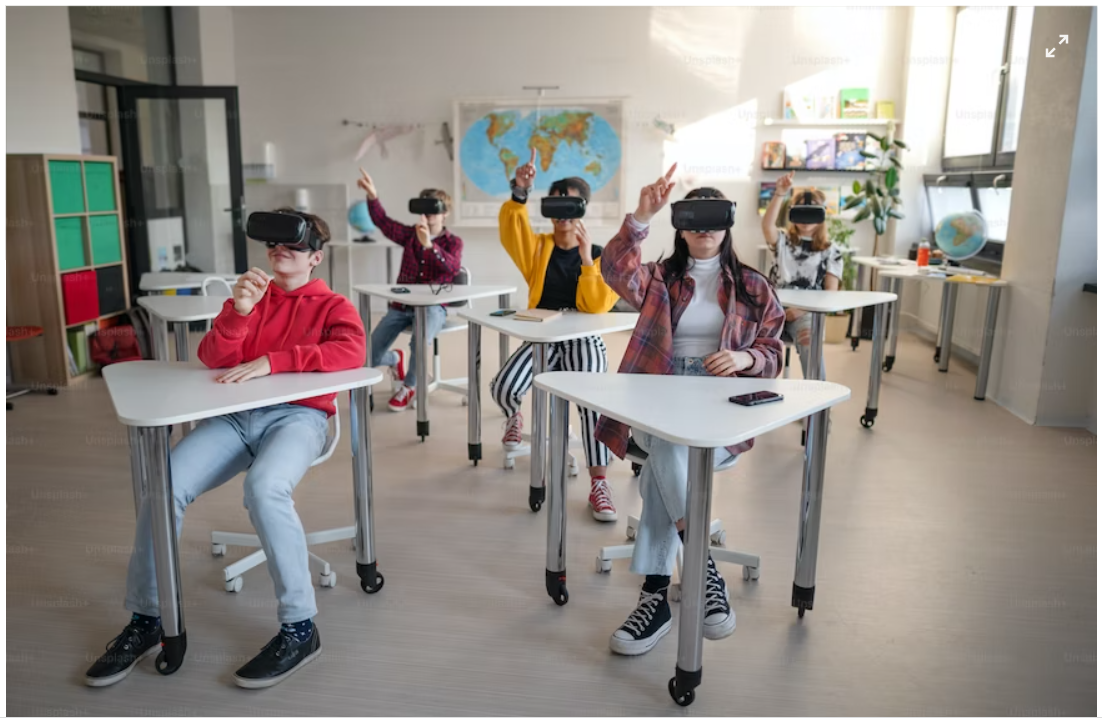One of the best things about VR gaming is the way you get to play dating and romance sims right through your headset. It gives you a level of immersion that you can’t get any other way. The longer you play these games, the deeper into their worlds you get to explore. Dating sims lend themselves to VR gaming more than most other genres because of how personal they are. They’re emotional trips into the gaming worlds and taking them through a headset makes all the difference. Here are 10 of the best ones you can play right now.
10. VR Chat

Starting things off is a game that isn’t really a game. VR Chat is a chat platform that lets you talk to real people around the world. You can play games, chat about different subjects, and try to romance the other players. It’s not really game unless you’re playing with other real people. That’s what it’s all about and you get to interact in the VR world. If you’re a fan of chatting, then this is something for you to check out right away. There’s always someone online to enjoy a conversation with.
9. Skyrim VR

Next up is a game with romance elements that you’ve heard about and most likely spent a lot of time playing. Skyrim VR is the latest way to get onto the continent of Tamriel and explore the huge open world environment. Just like the non-VR version of the game, you get to romance NPCs and propose marriage to the one you like the most. That gives you access to their money and a place to live with them. It also allows you to decorate and give them gifts. If you want a fully immersive experience, you always have to find a life partner in this game.
8. Fallout 4 VR

Fallout 4 VR is another major roleplaying game that started with Fallout 4. The game was ported over to VR and you still have the option of romancing your companions. These NPCs have to be selected as your companions if you want to trigger and play through their storylines. As you complete them, you’ll have the option of choosing romance dialogue options. You’ll need high relationships with them, which means you also have to figure out what they like. Cait, for example, likes it when you price gouge quest givers while Piper likes it when you help people for free.
7. Dating Lessons

Dating Lessons isn’t really a good game, but it’s fun to play. It should be noted that some people think the VR is disorienting, so keep that in mind. It sets out to teach you how to act on a date with real people. It brings up the importance of your tone, your approach, touching, and a lot more. It’s not a very deep game and some of the tips are ridiculous. If you like a game that is unintentionally funny, this is a great option every time.
6. Focus On You

Focus On You lets you take on the role of a photographer working with a volunteer in your studio. You get to have a shoot with her and she’s more than happy to pretend to be a real model for you. The more you work through the shoot, the more you’ll get to know her and that’s where the dating sim comes in. You get to pick your conversations and try to romance her all the way to a relationship. It’s not a very long game and that can be a problem for some people.
5. Gal*Gun VR

Gal*Gun VR is a dating sim with a weird and entertaining slant that lots of people really enjoy. You’re the most popular guy in school and the girls all want to date you. While that sounds great, the gameplay has you struggling to keep them all at bay. You’ll have a pheromone gun that you have to use to beat them back and keep them from overwhelming you. It meshes dating and shooting for a fun game with anime girls. It’s a Japanese dating sim that’s going to keep you entertained for a long time to come.
4. I’m Gonna Blow! The Nuke Seduction Game

Another dating sim in the realm of the weird is I’m Gonna Blow! The Nuke Seduction Game. This one has you romancing a nuclear bomb and it’s just as much fun as it sounds. You’re a government agent who’s tasked with the job, and the weapon just happens to be sentient. You have to impress her and flirt with her until she’s so smitten that she forgets all about exploding. You’re working against the clock the entire time and it’s plenty of fun while you try to save the world.
3. Alternative Girls

Alternative Girls is a classic Japanese dating sim that has a huge following withing the dating sim game community. It’s not very long or deep, but it’s immersive and it shows you exactly how good a VR dating sim can be. It’s great for anime fans who love the cartoony look of the girls, and you’ll have 13 of them to romance. You’ll have to succeed with all of them if you want to beat the game. It’s a casual experience that you’ll want to play more than once just so you can spend more time with a classic game.
2. Happy Manager

Happy Manager is another Japanese dating sim that gives you a classic experience that lots of people love. You’re playing as a property manager with some tenants who just happen to be starved for love. These three women start flirting with you to the point where you can’t resist flirting back. You’ll have almost 28,000 lines of dialogue to enjoy and the game has plenty of re-playability for you. It’s colorful and fun and something you have to check out if you enjoy dating sims with anime girls that you want to spend a lot of time with.
1. Dreams VR

Dreams VR isn’t a dating sim on its own. It’s a sandbox building game that lets players construct anything they want, even other games. That means you’re going to get lots of fun and unique games that other fans of dating sims have created for the community. You can date pop culture characters like Sonic the Hedgehog and that’s just a lot of fun. You’ll also be able to make your own games, and that’s something that you can’t really find that often. That’s why this game is at the top of the list.






